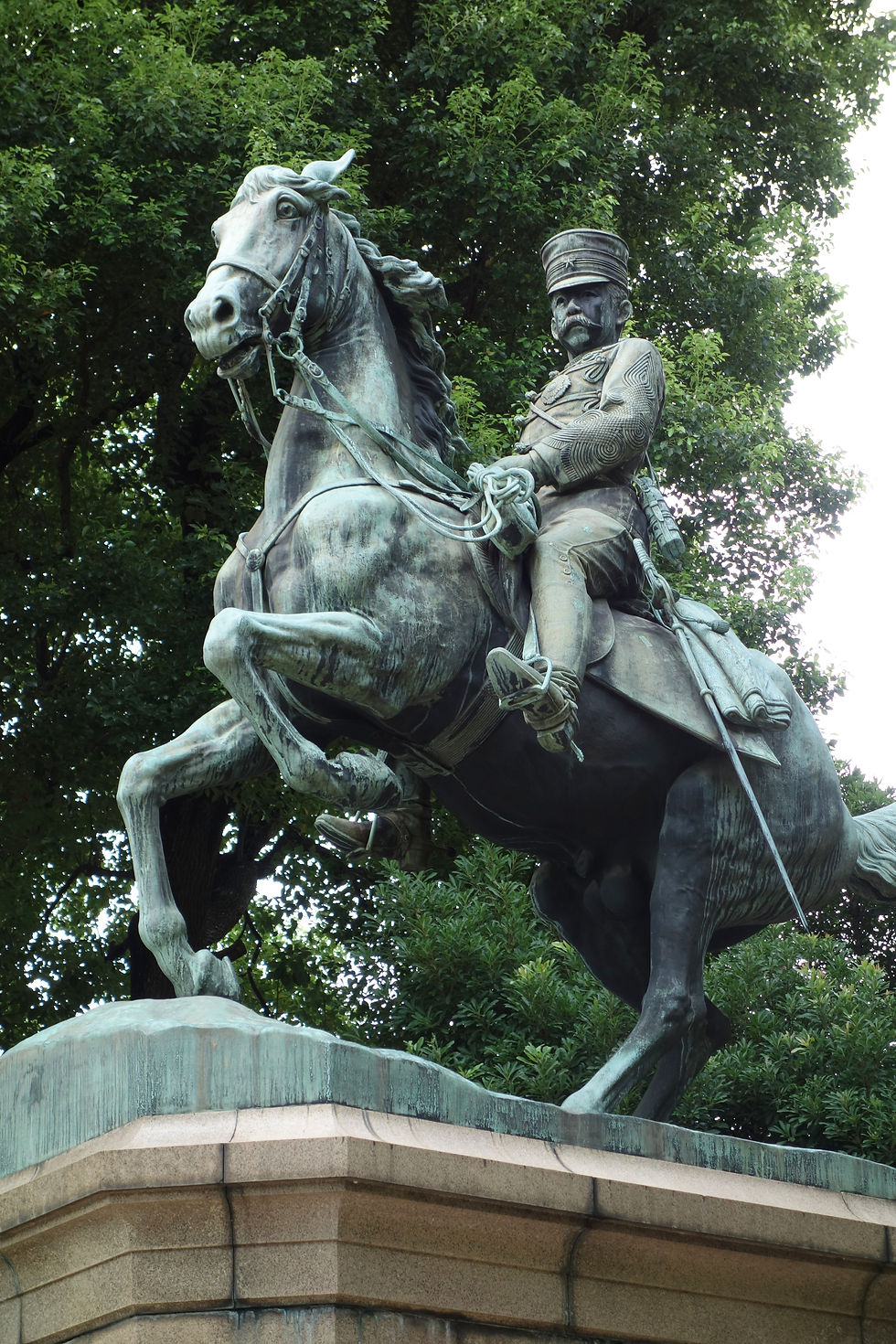Tokyo Imperial Palace
The Imperial Palace is comprised of many different areas that include shrines, statues, parks, and many important buildings.
GROUNDS
Fukiage Garden
Located along the northern part of the Imperial Palace, the Fukiage Garden has many flowers and trees that are located within Japan. The gardens date back to the 17th Century and contains moats, tea-houses, and shrines as well as being used for equestrian sports. A notable building is the Pine-Tree Tea-House.



Ninomaru Gardens
The Ninomaru Gardens can be found within the second cirle of defense of the palace, Ninomaru meaning second circle. The gardens have been around since the Tokugawa shogunate and are located where the Edo Castle once stood. The gardens are only open to the public on New Years Day and the Emperor's birthday. The trees within the gardens represent each prefecture of Japan and there are nearly 260 with 30 varieties. The Ninomaru Gardens also house the Tokagakudo Music Hall which was built for the Empress Kojun in 1963. The hall is an octagon with eight surrounding walls with each wall having a different design made from mosaic tiles.




Kitanomaru Park
The Kitanomaru Park is part of the former Edo Castle's enceinte and is located to the north of the palace's perimeter. Notable attractions are the Nippon Budokan Hall which was built for the 1964 Olympics and has held many famous concerts over the years including western artist. Another notable site is the bronze monument of Prince Kitashirakawa Yoshihisa.




Kokyo Gaien
The Kokyo Gaien National Gardens have to opened to the public since 1949.
The area is divided into several sections, containing the Garden Plaze, twelve scenic moats surronding the Imperial Palace and the famous bronze statue of Kusunoki Masashige.




Events
New Year's Poetry
The Imperial Palace itself is closed year round but is open to the public on New Year's Day. The Emporer himself reads poetry that he himself as written. This tradition dates back to 1267 when Emporer Kameyama convened a Poetry Reading at the Imperial Palace in Kyoto.

Crowning of a new Emperor
Whenever a new Emperor is crowned, the Japanese Imperial Regalia are gathered together at the Imperial Palace. The three pieces of the Imperial Regalia are the Sword known as Kusanagi, the Jewel known as Yasakani, and the Mirror called the Yata. The Jewel is thought to be the only original piece of Regalia. There is a lot of mystery surrounding the Imperial Regalia because very few have seen them and they are scattered across Japan in hidden locations.
